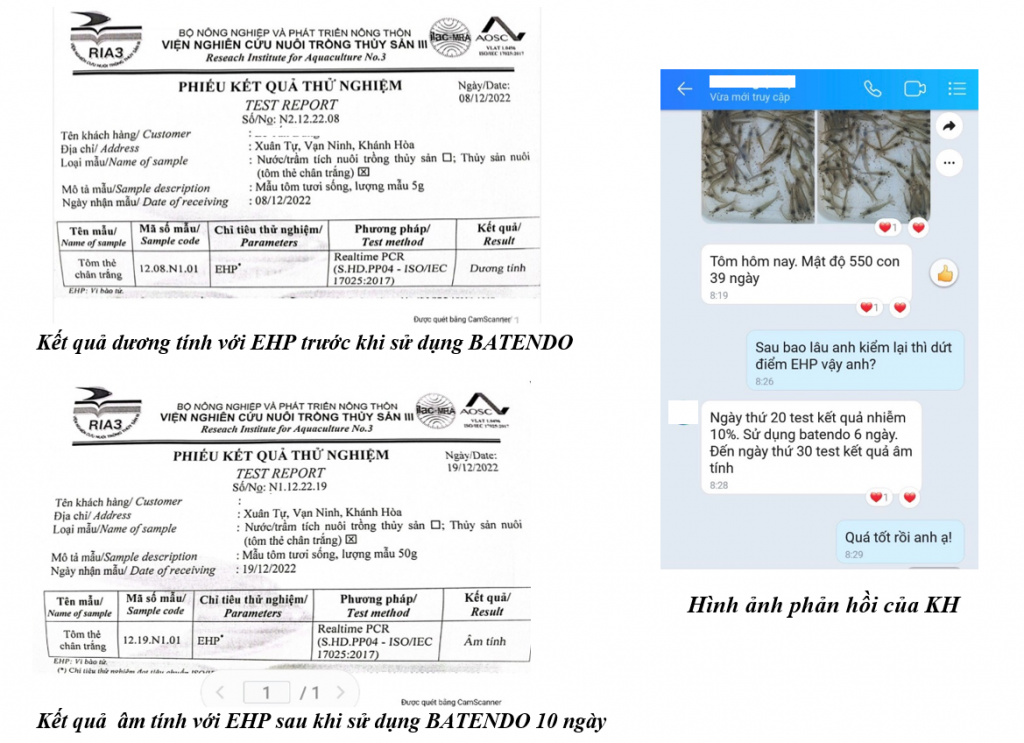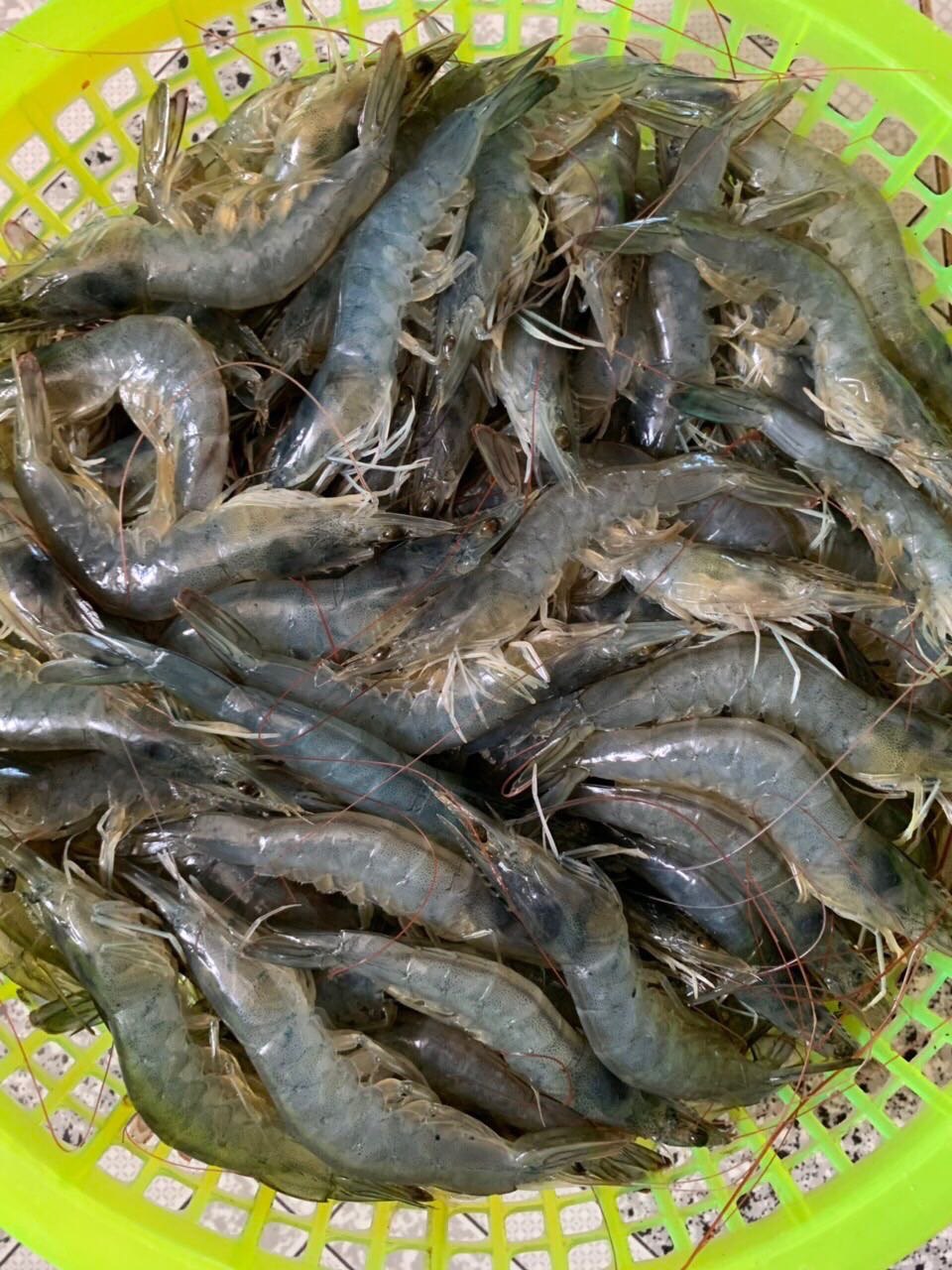WHITE FECES ASSOCIATED WITH EHP: PRACTICAL APPLICATION OF BATENDO IN TREATING AND INHIBITING
Currently, the application of probiotic biological products, supplementary active substances, etc., in shrimp farming to inhibit white feces associated with EHP is a normal practice for farmers. This has greatly supported them in improving the quality of the farming environment, enhancing shrimp’s immune system, digestive system, and overall resistance.
However, the issue of white feces associated with EHP in shrimp is still a concerning problem that many farmers are interested in. Most commercial shrimp ponds in various regions of Vietnam have a high infection rate, and most farmers choose to harvest and restock their ponds. Finding solutions to inhibit and treat white feces associated with EHP shrimp is a top priority for Thai Nam Viet. We are always prioritizing the support for farmers.
Fortunately, we have found a solution that can partially assist farmers in inhibiting white feces associated with EHP commonly observed in shrimp.
How do you know whether your shrimp has white feces associated with EHP?
- Shrimps infected with EHP often exhibit the following external characteristics:
+ Presence of numerous cloudy white spots on the shrimp’s body.
+ Shrimp experiencing loose intestines, fragmented feces, and twisted or coiled intestines.
+ Shrimp have white feces, which causes sporadic deaths and can reach up to 100kg per day after a week of EHP infection.

In some cases, when shrimp are infected with EHP, it may not cause mortality, but it can hinder the shrimp’s nutrient absorption process in the pancreas, leading to poor digestion and the potential occurrence of white feces. Additionally, severe EHP infection in shrimp often coincides with bacterial overgrowth, which allows other opportunistic pathogens to invade, resulting in the presence of bacteria that can induce white feces in heavily infected shrimp.
In aquaculture ponds, shrimp infected with EHP and exhibiting white feces may coexist, or the pond may temporarily cease white feces production while the shrimp are still infected with EHP. Furthermore, white feces can be caused by various other factors such as bacteria, algae, or sediment. Therefore, observing white feces in the pond system cannot be solely relied upon as an indicator of EHP infection. To accurately determine the causative agent of the disease as EHP, it is recommended to utilize the PCR method for the most reliable results.
Practical solutions and applications from Thai Nam Viet to inhibit white feces associated with EHP
The solution that Thái Nam Việt wants to introduce to everyone is the product BATENDO – a probiotic product that helps inhibit internal parasites and the EHP pathogen. The product consists of beneficial bacterial strains that have the ability to strongly inhibit intracellular parasites in the water environment and the digestive system of aquaculture animals, suppress disease-causing agents in ponds, and enhance the immune system of farmed shrimp.
Our solution has been applied in numerous farms across provinces and has brought outstanding results to the ponds of farmers. An exemplary case is the shrimp pond in Long An province, which we shared in a previous article (Probiotics and EHP). Moreover, we have received positive feedback from customers in various provinces.

Negative results for EHP after 10 days of using BATENDO.
In addition to using BATENDO in the process of treating EHP, it is also important for farmers to pay attention to a good nutritional regime for their farmed shrimp, supplementing them with adequate minerals, maintaining a proper feeding regimen, and ensuring water quality. These factors are essential in the process of combating this disease.
Farmers are well aware of the significant losses caused by EHP infection in shrimp farming. Therefore, early, accurate, and comprehensive treatment is crucial in preventing the rapid progression of EHP and other diseases, minimizing damage to the shrimp. With practical experience and high-quality products, Thái Nam Việt believes that we can provide support and accompany farmers toward achieving a successful harvest.






